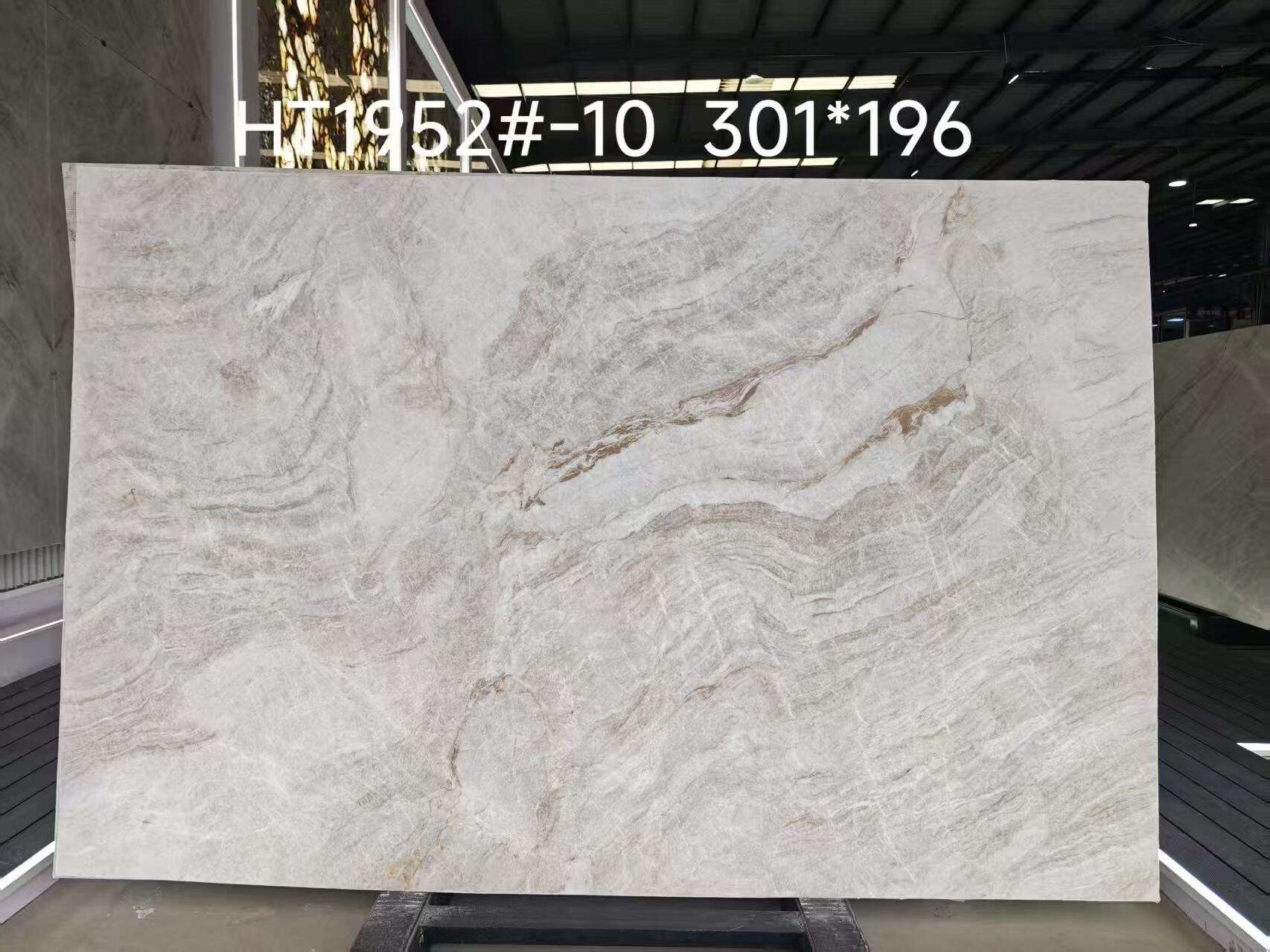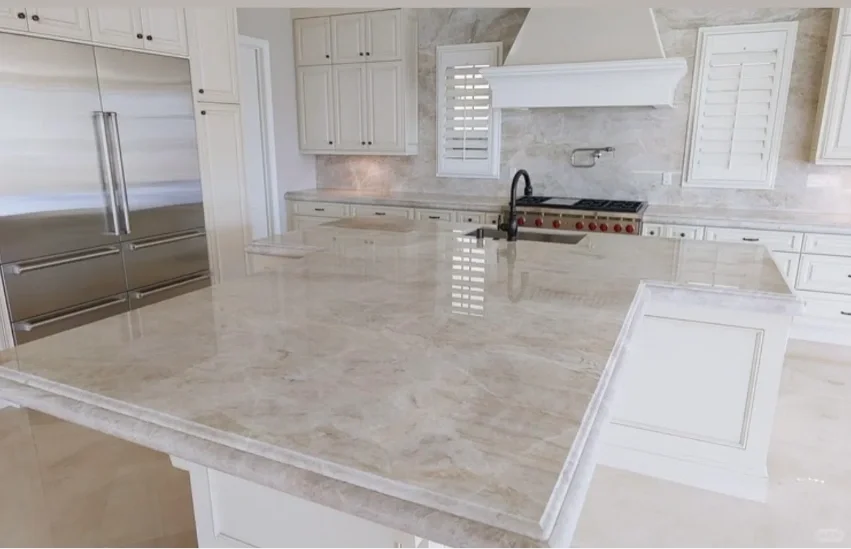Discover Natural Taj Mahal Quartzite Slab: A Practical Introduction for Home Improvement
Taj Mahal Quartzite Slab has become a favorite in home improvement projects, praised for its stunning beauty and durable nature. This natural stone brings a touch of elegance to any space, making it a top choice for homeowners looking to upgrade their kitchens, bathrooms, or living areas. With its soft colors and unique patterns, Taj Mahal Quartzite Slab fits seamlessly into a variety of design styles, from modern to traditional. If you’re considering natural stone for your next home improvement project, this practical introduction will help you understand why Taj Mahal Quartzite Slab is worth exploring.
What Is Taj Mahal Quartzite Slab?
Taj Mahal Quartzite Slab is a type of natural quartzite, a stone formed deep underground over millions of years. It starts as sandstone, which is then transformed by intense heat and pressure into a hard, crystalline rock. What makes Taj Mahal Quartzite Slab special is its unique color and pattern. It features soft, creamy beige tones with subtle veining in shades of white, gray, or light gold, creating a warm and inviting look that resembles marble but with more durability.
Unlike man-made materials, each Taj Mahal Quartzite Slab is one-of-a-kind. The natural formation process means no two slabs are exactly alike, giving your home improvement project a unique character that can’t be replicated by synthetic alternatives. Its hardness and resistance to wear make it a practical choice for high-traffic areas, while its beauty adds a luxurious touch to any space.
Key Benefits of Taj Mahal Quartzite Slab for Home Improvement
Choosing Taj Mahal Quartzite Slab for your home improvement project comes with several advantages that make it a smart investment:
Durability for Daily Use
Taj Mahal Quartzite Slab is extremely hard, with a Mohs hardness rating of 7 (only a few materials like diamonds are harder). This means it resists scratches from knives, pots, and everyday use, making it ideal for busy kitchens or family spaces. Unlike marble, which can etch easily from acidic spills, Taj Mahal Quartzite Slab is more resistant to stains and damage, especially when properly sealed. It also handles heat well, so you can place hot pots or pans on it without worrying about discoloration or warping.
Timeless Beauty
The soft beige and cream tones of Taj Mahal Quartzite Slab have a timeless appeal that won’t go out of style. Its subtle veining adds depth and visual interest without being too bold, making it easy to pair with other materials and colors. Whether you have white cabinets, dark wood, or colorful accents, this stone complements a wide range of design styles, from modern minimalist to cozy rustic. This versatility ensures your home improvement project will look elegant for years to come.
Low Maintenance
While no natural stone is completely maintenance-free, Taj Mahal Quartzite Slab requires minimal upkeep. A simple sealing routine (every 12–18 months) keeps it protected from stains. Daily cleaning is easy: just wipe up spills with a soft cloth and warm, soapy water. Unlike materials that fade or need frequent replacement, Taj Mahal Quartzite Slab retains its beauty with little effort, making it a practical choice for busy homeowners.
Adds Value to Your Home
Natural stone surfaces like Taj Mahal Quartzite Slab are highly desirable among homebuyers. Installing it in key areas like kitchens or bathrooms can increase your home’s resale value. Its durability and timeless look mean potential buyers will see it as a long-term investment, making your home stand out in the market.
Best Uses for Taj Mahal Quartzite Slab in Home Improvement
Taj Mahal Quartzite Slab’s versatility makes it suitable for many areas of the home. Here are the most popular ways to use it in home improvement projects:
Kitchen Countertops
The kitchen is often the heart of the home, and Taj Mahal Quartzite Slab countertops instantly elevate its look. Its soft beige tones pair beautifully with white or light gray cabinets, creating a bright and airy feel. For a warmer look, it complements wood cabinets in shades of oak or walnut. A large Taj Mahal Quartzite Slab island can serve as a focal point, providing ample workspace while adding elegance. Its heat resistance and durability make it perfect for cooking areas, where spills and heavy use are common.
Bathroom Vanities
In bathroom home improvement projects, Taj Mahal Quartzite Slab adds a spa-like touch to vanities. Its light color makes small bathrooms feel larger, while its resistance to water (with proper sealing) stands up to daily use. A honed (matte) finish is a popular choice here, as it reduces water spots and gives the space a subtle, sophisticated look. Pair it with white subway tiles or glass shower doors for a cohesive, high-end design.

Fireplace Surrounds
A Taj Mahal Quartzite Slab fireplace surround transforms a living room into a cozy gathering spot. Its warm tones complement the glow of a fire, creating a welcoming atmosphere. Whether your style is modern or traditional, the stone’s natural beauty adds texture and elegance. A polished finish can make the fireplace a sleek focal point, while a honed finish adds a more rustic touch.
Backsplashes
For a cohesive look in the kitchen, use smaller pieces of Taj Mahal Quartzite Slab as a backsplash. This ties the countertops and walls together, creating a unified design. Subway tiles or mosaic pieces work well, adding subtle texture without overwhelming the space.
Outdoor Kitchens
Taj Mahal Quartzite Slab is also suitable for covered outdoor kitchens. Its resistance to UV rays prevents fading, and proper sealing protects it from light rain and humidity. Use it for outdoor countertops or dining areas, where it blends with natural surroundings while adding a touch of luxury.
How to Choose the Right Taj Mahal Quartzite Slab
Selecting the perfect Taj Mahal Quartzite Slab for your home improvement project requires careful consideration. Here’s what to keep in mind:
View Slabs in Person
Never choose a Taj Mahal Quartzite Slab based solely on photos. Visit a stone yard to see the full slab, as patterns and colors can vary. Look for a slab with veining that flows smoothly—some may have more prominent veins, while others are more subtle. Choose a pattern that fits your style: bold veins for a statement piece, or soft veining for a understated look.
Check for Quality
Inspect the slab for cracks, chips, or large pores. Small, natural pits are normal in quartzite, but avoid slabs with deep cracks or uneven edges, as they can weaken over time. Run your hand over the surface to ensure it’s smooth, with no rough spots that could trap dirt.
Consider Thickness
Taj Mahal Quartzite Slab comes in two common thicknesses:
- 2 cm (¾ inch): Suitable for smaller areas like bathroom vanities or backsplashes. It’s lighter and more affordable but may need a plywood backing for support.
- 3 cm (1¼ inches): Ideal for kitchen countertops, islands, and fireplace surrounds. It’s sturdier, doesn’t require backing, and has a more substantial, high-end look. Most homeowners prefer 3 cm for larger home improvement projects.
Choose the Right Finish
The finish affects both the look and maintenance of your Taj Mahal Quartzite Slab:
- Polished: A shiny, reflective finish that enhances the stone’s color and veining. It’s sleek and modern but shows fingerprints and water spots more easily.
- Honed: A matte, smooth finish that reduces glare and hides smudges. It’s perfect for bathrooms or family kitchens, as it’s more forgiving with daily use.
Installation and Care Tips
Proper installation and care ensure your Taj Mahal Quartzite Slab lasts for decades:
Hire a Professional Installer
Taj Mahal Quartzite Slab is heavy and requires precise cutting, so hire experienced professionals for installation. Look for installers with experience in natural stone, and ask to see examples of their past work. They’ll ensure the slab is supported properly and sealed correctly.
Seal Regularly
Sealing is key to protecting Taj Mahal Quartzite Slab from stains. Most installers apply a sealer after installation, but you’ll need to reseal every 12–18 months. To check if it’s time, drop a few drops of water on the surface—if they soak in, it’s time to reseal. Use a high-quality stone sealer and follow the instructions carefully.
Daily Care
Clean spills immediately with a soft cloth and warm, soapy water. Avoid acidic cleaners like vinegar or lemon juice, as they can dull the finish. Use cutting boards to prevent scratches, and place trivets under hot pots to protect the surface.
FAQ
Is Taj Mahal Quartzite Slab expensive?
It’s mid-to-high range, with prices ranging from $70–$120 per square foot (including installation). The cost depends on thickness, finish, and slab size, but its durability makes it a long-term investment.
How does it compare to marble?
Taj Mahal Quartzite Slab looks similar to marble but is much more durable. Marble etches easily from acidic spills, while quartzite resists stains and scratches better. It’s also more heat-resistant than marble.
Can it be used in showers?
Yes, but only with proper sealing. A honed finish is better for showers, as it provides more traction than a polished finish. Clean regularly with mild soap to prevent mold.
Does Taj Mahal Quartzite Slab fade in sunlight?
No, its natural colors are stable and won’t fade from sunlight, making it safe for sunny rooms or covered outdoor areas.
How long does it last?
With proper care and sealing, Taj Mahal Quartzite Slab can last 20–30 years or more, making it a durable choice for home improvement projects.

